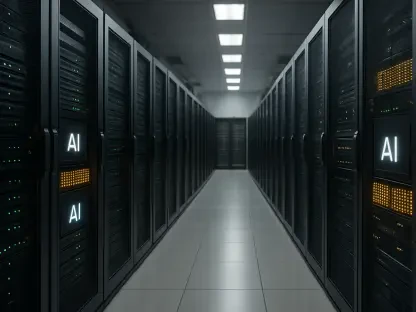The landscape of automotive software development is undergoing a significant transformation, largely driven by the advent of cloud-based technologies. Traditional methodologies, which demanded physical vehicle systems for testing and development, are being replaced by more flexible, efficient, and cost-effective cloud-based environments. This evolution is crucial for accommodating the growing complexity of automotive software in the era of Software Defined Vehicles (SDVs). The integration of cloud resources in the software development lifecycle is altering the way automotive systems are built, tested, and deployed, paving the way for a future defined more by software than hardware.
The Complexity of Modern Automotive Software
Increasing Software Requirements
The automotive industry’s shift towards Software Defined Vehicles has introduced sophisticated software requirements. Modern vehicles are now equipped with a multitude of sensors, advanced driver-assistance systems (ADAS), and infotainment features, all of which demand robust and integrated software solutions. Unlike the relatively simple software systems of the past, today’s automotive software must handle complex tasks like real-time data processing, safety-critical functions, and seamless user experiences. These advancements mean that vehicles are increasingly reliant on software for essential functions, from basic engine operations to sophisticated autonomous driving capabilities.As vehicle software architectures grow more complex, the challenges associated with developing, testing, and maintaining these systems multiply. Manufacturers must ensure that software systems are not only functional and efficient but also secure from potential cyber threats. This requires a development environment that can rapidly adapt to emerging technologies and continuously implement updates. Traditional development methods, which involved physical hardware for testing, cannot keep pace with these demands. Consequently, the industry’s migration to cloud resources aims to bridge this gap by providing an agile, scalable, and secure platform for software development.
Traditional Development Challenges
Traditionally, developing and testing automotive software required the presence of physical vehicle hardware. This approach was not only costly but also limited in terms of scalability and flexibility. Testing environments were constrained by hardware availability, and any modifications or updates to the software involved time-consuming and labor-intensive processes. Additionally, the logistical challenges of coordinating physical resources across different teams and locations further hindered efficiency. More critically, perhaps, was the security risk posed by testing on physical systems, where software vulnerabilities could directly impact real-world vehicles.Physical testing methods also presented significant limitations in iterative development and rapid prototyping. Each test iteration required physical setup, calibration, and in many cases, complete reassembly of components, which curtailed the speed at which development could proceed. These hurdles made innovation slow and costly, leaving little room for agile response to new insights or market demands. In light of these obstacles, the transition to cloud-based environments is not just beneficial but necessary to overcome the myriad challenges associated with traditional automotive software development.
The Shift to Cloud-Based Development
Advantages of Cloud-Based Environments
Cloud-based development environments offer a solution to many of the challenges faced by traditional methods. By leveraging cloud resources, developers can create, test, and deploy software in a virtual space, independent of the physical vehicle hardware. This virtual approach allows for more rapid iterations and agile development cycles. Additionally, cloud environments provide scalable computing resources, enabling developers to handle complex simulations and emulations efficiently. The flexibility of cloud-based methods allows developers to simulate a wide array of scenarios and conditions without the limitations imposed by physical hardware.The benefits of cloud-based environments extend to cost reduction and heightened security. Developers can access high-performance computing resources on a pay-as-you-go basis, significantly reducing the capital expenditure associated with maintaining in-house infrastructure. Moreover, cloud services offer built-in security features and compliance certifications, ensuring that software development adheres to industry standards and protects against vulnerabilities. This combination of agility, scalability, cost-efficiency, and security underscores why cloud-based environments are increasingly the preferred choice for automotive software development.
Improved Flexibility and Collaboration
One of the significant advantages of cloud-based development is the improved flexibility and collaboration it offers. Developers from different geographical locations can work together seamlessly in a cloud environment, contributing to a more collaborative and integrated development process. This global collaboration eliminates the geographical barriers that once hampered teamwork and innovation. Furthermore, cloud platforms support concurrent version control and continuous integration/continuous deployment (CI/CD) practices, which are critical for maintaining high-quality software. Continuous integration allows developers to merge code changes frequently, avoiding the bottlenecks associated with batch processing.In addition to fostering collaboration, cloud-based environments enable more effective resource management. Development teams can quickly scale their computing resources up or down based on project demands, optimizing both performance and cost. Automated testing and deployment pipelines further streamline the process, ensuring that new features and updates are validated and deployed efficiently. This proactive approach to software development not only accelerates time-to-market but also enhances the overall quality and dependability of the software products. Together, these advantages make cloud environments indispensable in modern automotive software development.
Role of BlackBerry QNX and AWS in Cloud-Based Development
Introduction to QNX and AWS Partnership
The partnership between BlackBerry’s QNX and Amazon Web Services (AWS) represents a pivotal development in the automotive software industry. BlackBerry QNX, known for its reliable and secure operating systems and middleware, has leveraged AWS’s cloud infrastructure to create a robust cloud-based development environment. This collaboration aims to streamline the development process and accelerate the deployment of automotive software. By utilizing AWS’s extensive cloud services, QNX developers can emulate vehicle environments, test software applications, and deploy updates seamlessly. This partnership signifies a move towards a more integrated and advanced development landscape.In utilizing AWS’s robust infrastructure, BlackBerry QNX can offer developers numerous services and tools designed to meet the unique demands of automotive software. This includes capabilities for real-time processing, enhanced security measures, and extensive data storage options. AWS’s cloud solutions ensure that development teams have access to the latest technological advancements, facilitating innovation and efficiency. Together, BlackBerry QNX and AWS are spearheading the transition to cloud-based paradigms in automotive software, providing a model for the industry to follow.
QNX Accelerate and AWS Integration
The QNX Accelerate plan, a key component of this partnership, focuses on utilizing AWS’s cloud services to distribute and deploy target images. This integration enables developers to create and test software on virtual machines that mimic real-world vehicle environments. By using Amazon Machine Image (AMI) for deploying QNX operating systems and hypervisors, developers can rapidly iterate and validate their software without the need for physical hardware. This method allows for extensive testing scenarios and ensures that the software can be evaluated under diverse conditions, bolstering its reliability and performance.The integration between QNX and AWS extends beyond mere infrastructure provision. It includes the deployment of comprehensive development tools and platforms that developers can leverage to improve their workflows. For instance, AWS provides a wide array of analytics and monitoring tools that assist developers in gaining insights into system performance and potential issues. These capabilities enable continuous refinement and enhancement of software, ensuring that final products meet the highest standards of safety and functionality. This synergy between QNX and AWS epitomizes the advantages of cloud-based development, offering an efficient, scalable, and secure environment for automotive software creation.
Real-World Applications: Stellantis N.V. Case Study
A notable example of the successful implementation of cloud-based development is the Stellantis Virtual Engineering Workbench (VEW). Stellantis N.V., an automotive manufacturing giant, has adopted this cloud-centric approach to revolutionize its software development cycles. The VEW allows for a 100-fold acceleration in development cycles by enabling virtual simulations and collaborative testing environments. This significant improvement is a testament to the efficiency and capability of cloud-based development techniques. By capitalizing on the cloud’s flexibility, Stellantis has shortened development timelines and improved the overall quality of its software.In addition to accelerating development cycles, Stellantis has achieved substantial cost savings and heightened security through its use of cloud-based environments. The virtual nature of the VEW reduces the need for extensive physical testing setups, lowering overhead costs. Moreover, cloud environments inherently provide secure frameworks for software development, safeguarding against vulnerabilities and compliance issues. This case study highlights the practical benefits of cloud-based development, demonstrating its potential to transform industry practices. Stellantis’ success underscores the viability and advantages of adopting cloud-based methodologies in automotive software development.
Broader Industry Trends and Future Outlook
Emulating Consumer Electronics Models
The trend towards cloud-based development in the automotive industry is reminiscent of the production models seen in consumer electronics. Consumer electronics and PC industries have long leveraged cloud environments for agile development, rapid prototyping, and efficient deployment. The automotive industry is now following suit, recognizing the potential for improved innovation and faster delivery cycles through cloud-based methodologies. The adoption of these practices signifies a departure from traditional development constraints, allowing for more dynamic and responsive production processes.As automotive manufacturers integrate these cloud-based strategies, they benefit from the extensive experience and established practices of the consumer electronics industry. The methodologies that enable rapid prototyping and iterative development cycles in consumer electronics are now enhancing automotive software development. This cross-industry learning fosters a culture of continuous improvement and innovation, propelling the automotive sector toward greater efficiency and capability. By emulating these models, the automotive industry ensures that it remains on the cutting edge of technological advancements and meets the evolving demands of modern consumers.
Expansion to Other Cloud Platforms
As cloud-based development gains traction, there is potential for expansion beyond AWS to other major cloud platforms like Microsoft Azure and Google Cloud. This diversification will provide automotive developers with a broader range of tools and services, further enhancing the flexibility and capabilities of cloud-based development environments. With multiple cloud platform options, automotive manufacturers can choose the best fit for their specific needs and requirements. This flexibility ensures that developers have access to the newest innovations and the most suitable tools for their projects.The expansion to other cloud platforms will also foster a more competitive environment among cloud service providers, driving further advancements and cost reductions. As companies like Microsoft and Google invest in automotive-specific cloud solutions, developers can expect to benefit from cutting-edge features and capabilities tailored to their industry. This proliferation of cloud options not only enhances the tools available to developers but also supports the industry’s overall drive towards more efficient, secure, and innovative software development practices. The broad adoption of multiple cloud platforms will ultimately push the automotive sector towards greater technological and operational excellence.
The Future of Software Defined Vehicles
The field of automotive software development is experiencing a profound transformation, primarily driven by the rise of cloud-based technologies. Traditional development methods required physical vehicle systems for testing and iteration, but these are now being replaced by more flexible, efficient, and cost-effective cloud-based environments. This shift is essential to manage the increasing complexity of automotive software, especially in the age of Software Defined Vehicles (SDVs). Cloud resources are now integrated into every stage of the software development lifecycle, fundamentally altering how automotive systems are designed, tested, and deployed. This transformation is preparing the automotive industry for a future where software takes precedence over hardware, enabling faster development cycles, greater scalability, and improved adaptability. The integration of cloud computing not only enhances the efficiency of development but also opens the door to innovations like over-the-air updates and real-time data analytics, heralding a new era in automotive technology where the car’s software ecosystem becomes its most defining feature.









